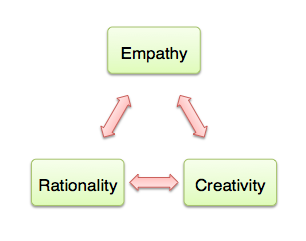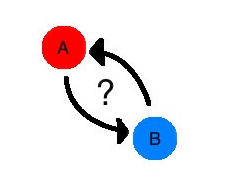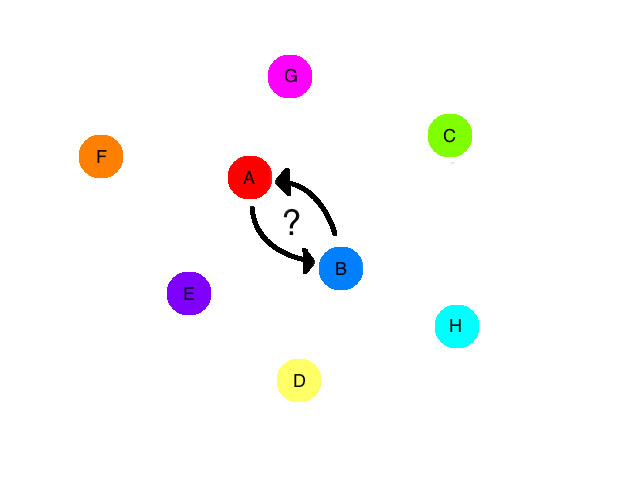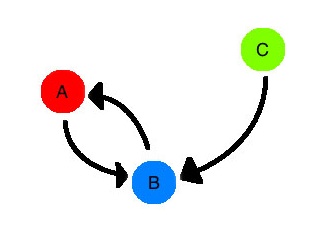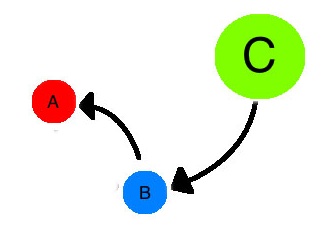IJDU was a multidisciplinary project I set out on at the beginning of the d.Studio course. The purpose of the project was to develop a personal understanding of what design thinking is.
Wikipedia’s definition of Design Thinking is:
Design Thinking is a process for practical, creative resolution of problems or issues that looks for an improved future result.[1] It is the essential ability to combine empathy, creativity and rationality to meet user needs and drive business success.
After this course by dedicated learning and understanding through osmosis I can adeptly interpret this definition with my own experiences.
Empathy: the users are the experts. At the beginning of the course empathy would have been the most misunderstood pillars of design thinking. Through the readings and our projects an acknowledgement of user centered design has been at the forefront of our design principles. Empathy maps have become a staple framework I use when designing anything. In my new venture design course I have used them to unravel the needs of many different players to create solutions that will solve instead of contribute to their problems. An empathy map of an informal merchant in a Ghanaian industrial cluster spring boarded an idea to create a SMS reputation system with hopes of solving his problem of access to credit.
Creativity: Unleashing the mind. My surface level understanding of creativity was shattered by the end of the course. The course allowed a better understanding of how to create the right environment for creativity, through taming my critical voice and adding new concepts to my design thinking toolkit.
Rationality: Ground Control to Major Tom. When you put the words design thinker and rationality together most people’s faces wince. However, this last point is every design thinkers life saver. After allowing the fragile ideas to migrate to the surface of consciousness there must be a selection phase. In the end all ideas are not created equal and you need to be as good an ideator as an editor to fully give your ideas a fighting chance.
Understanding Patterns: Applying New Ways of Thinking
My first blog was a reactionary piece to Peter Norvig’s talk on a new way to look at computer software design. At this time I had just been introduced to design thinking. When viewing a slide midway through Peter’s presentation I noticed the shift in design principles. The shift: before the program used to be the center of the software universe. Now data is the heart of most cutting edge computer services.
Understanding the design principle of data driven information models, has added to my way of looking at design problems. For example, the offline social network analysis, through post-its, is an example of a data-driven model. We allowed the Remington residents an avenue for creating there own data, sticking post-its on their friends doors through a game. The game gave us an way to innocuously collect data on the Remington building. The self generated data from the game differed from conventional program centric models, which would have required a laborious algorithm of door to door interviews to collect similar information.
Quieting The Mind: Observe Don’t Judge
The d.Studio has changed the way I think about learning. The blog post about mind maps and the redesign of conventional note taking deepened my understanding of design thinking.
The Redesign: MindNode takes a biological process (semantic memory) and applies it to an everyday learning task (note taking).
When reflecting on the course mandate of observing fully before judging, I immediately think of MindNode. Many entrepreneurs have designed many different ways to take notes. Most of these inventions are improvements on the end outcome. An example of the most notable improvements are Word Processing, which is a tidier version of the pen and paper, and Livescribe which is a two in one audio recording pen. However, none of these entrepreneurs took the time to observe the entire process of learning. Instead if we observed how we process, store and retrieve information we may come to an entirely different way of note taking. Without fully understanding the system there is a tendency to rush to the status quo (conventional note-taking) and start from there. The idea of mind maps comes from that other realm, where we quiet our judgmental minds and in doing so open them to new possibilities. This technique is extremely important when rethinking problems with exiting solutions. Quieting the mind circumvents our tendency to dwell on existing solutions, and allows us to see the innovative answer that is staring us right in the face.
As my team and I were designing our social programs at Concert, we made a concerted effort to not ‘jump to the finish line.’ In our society there is a deep-seeded paradigm that coordinated action must have a centralized source in order for success. We see it in everywhere in the public and private sector. However with bureaucracy comes inefficiency, inflexibility and low creativity. To leave this way of thinking, We turned to Janine Benyus’s life long fascination of zoology and the new design area of biomicry. At asknature.org we were able to use Janine’s existing observations to understand the design of social insect colonies. Swarm theory became my life for a day and I tired to piece together a self-organized community of ‘cooking-bees’ and ‘cleaning-bees’ for the communal kitchen. The end goal was to create different players with set rules that guided each player independently. When all players acted out these rules in concert, complex swarm behavior would be seen. In the end we as a team opted for a centralized structure to better accommodate the users at the Remington. Regardless, this design activity allowed me to better hone my design thinking tool kit.
Creative Destruction: Learning to Fail Fast
In the 1950s Joseph Schumpeter threw the Marxist term “creative destruction” over to the wolves, design thinkers. In most circumstances creation of a innovative new idea or process ultimately leads to obsolescence of an old idea. As design thinkers we must not be afraid of this process. The judging panel for the AMS food services projects gave the class the first taste of what design critique. We found out that destruction of a bad idea can be the building blocks of a new great idea and there is nothing wrong with failing.
Our ideas were challenged, augmented, built upon, and destroyed in the judging. In the end what we were left with wasn’t a bunch of broken ideas, but with a bunch of new or improved great ideas! My personal take away was a new goal: to be able to fully dissociate myself from my ideas. When that is established an amazing harmony of creative destruction can occur. In the harmony it is alright for an idea to fail. When I fully own that, I will be able to fully collaborate with another creative partner and in the end arrive at entirely new and amazing place.
